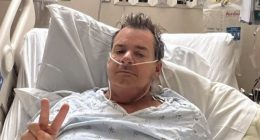The condition of your hairline can be influenced by various daily habits that may seem harmless. From the way you style your hair to your dietary choices, these habits can play a significant role in the health of your hairline. Understanding these factors is essential for maintaining a healthy and robust hairline. In this article, Sound Health and Lasting Wealth will explore 10 common habits that destroy your hairline, along with practical insights on how to mitigate their impact. By being mindful of these habits and making small adjustments, you can help preserve the health and integrity of your hairline.
1. Tight hairstyles
Tight hairstyles can contribute to hair loss and damage the hairline. Constant pull and tension from tight hairstyles can stress and weaken the hair follicles, leading to conditions like traction alopecia. Examples of tight hairstyles that can cause this damage include tight braids, weaves, buns, dreadlocks, and high ponytails. It’s recommended to opt for looser hairstyles to reduce the risk of hair loss and protect the hairline.
2. Sleeping on wet hair
Sleeping on wet hair can have negative effects on the hair, including the hairline. Wet hair is more fragile and prone to breakage, and the friction from tossing and turning on a pillow can contribute to damage, including the risk of hair breakage and potential impact on the hairline.
It’s advisable to allow the hair to dry before sleeping to minimize the risk of damage and maintain a healthy hairline.
3. Overwashing
The impact of shampoo wash on scalp and hair conditions has been studied, and it was observed that a daily wash regimen was superior to washing once per week, with no observed detrimental effects on hair at this level of cleansing. However, frequent shampooing, especially with harsh cleansers, can strip your scalp of its natural oils, leading to dryness, irritation, and scalp inflammation which can ultimately affect the hairline.
4. Chemical treatments
Chemical treatments such as relaxing, bleaching, and dyeing can contribute to hair damage, including the hairline. These treatments can lead to a condition known as chemical alopecia, resulting in patchy hair loss and a damaged scalp. Overuse of dyes, perming, or relaxing solutions without allowing the hair time to recover can lead to this form of hair loss. The damage caused by chemical processes can result in thinning, bald patches, and scalp tenderness. However, treatments such as minoxidil and finasteride have been recommended to promote regrowth and restore the hair’s condition and strength after chemical trauma. It’s important to be cautious with chemical treatments and seek professional advice to minimize the risk of damage to the hair and hairline.
5. Heat styling
Excessive heat styling with straighteners, curling irons, and blow dryers can damage the hair shaft and lead to breakage. If you must heat style your hair, use a heat protectant spray and avoid using high heat settings.
6. Stress
Stress can contribute to hair loss, specifically through a condition called telogen effluvium, which is characterized by temporary hair shedding. While stress is not directly linked to male pattern baldness, it can trigger and potentially worsen telogen effluvium, leading to hair thinning and shedding, including around the hairline. Chronic stress has been found to impair hair follicle stem cells, potentially leading to hair loss.
7. Poor or unhealthy diet
A poor diet can contribute to hair loss and damage the hairline due to nutrient deficiencies. Essential vitamins and minerals, such as vitamin A and iron, play a crucial role in maintaining healthy hair. A diet lacking these important nutrients or containing excessive levels can lead to hair thinning and loss. For instance, an imbalance in vitamin A levels can trigger or exacerbate thinning, while iron deficiency is associated with hair loss. Additionally, protein is vital for proper hair growth, and a diet lacking sufficient protein can lead to hair abnormalities, including hair loss and brittle hair.
Therefore, maintaining a balanced and nutritious diet is essential for promoting healthy hair and preserving the integrity of the hairline.
8. Smoking
Smoking can potentially damage hair follicles and increase the risk of hair loss, including around the hairline. Smoking can lead to vasoconstriction, DNA damage, oxidative stress, and inflammation, all of which can contribute to hair loss. Additionally, smoking can reduce blood flow to the hair follicles, leading to nutrient deficiencies and damage to the hair left on the head, making it look dull and lifeless. Smoking can also cause the early onset of gray hair, make hair more brittle, and lead to low estrogen levels, which can significantly impact the hair growth cycle and hair health. Quitting smoking can help improve hair growth and reduce the risk of hair loss.
9. Excessive alcohol consumption
While there is no direct link between alcohol use and hair loss, heavy drinking can lead to situations such as nutritional deficiencies, malabsorption of key nutrients, and hormonal issues, which may contribute to hair thinning or loss. Alcoholism can cause hair loss in several ways, including dehydration, malnutrition, and inhibiting the body’s ability to absorb essential nutrients, such as zinc, B12, folic acid, and iron, which are vital for healthy hair growth. Additionally, alcohol abuse is associated with other health problems, including hormonal changes, which can also affect hair health.
10. Lack of sleep
The impact of lack of sleep on hair health, including the hairline, is not definitively established. While there is some evidence suggesting that poor sleep quality can lead to stress, a common trigger of hair loss, and potentially influence hair health, the direct causal relationship between lack of sleep and hairline damage requires further research for conclusive evidence.
Therefore, while adequate rest is important for overall health, including hair health, the specific impact of lack of sleep on the hairline remains an area that necessitates additional study for a comprehensive understanding.
How to mitigate their impact
Reduce washing frequency:
- Identify your hair type: Fine hair might only need washing 1-2 times a week, while thicker hair might handle 2-3 washes. Analyze your scalp oiliness and adjust accordingly.
- Co-washing: Use a gentle conditioner instead of shampoo to cleanse, as it removes dirt without stripping natural oils. This is great for dry or curly hair.
- Dry shampoo: Use dry shampoo between washes to absorb excess oil and refresh your hair without water. Choose ones containing gentle ingredients, especially if you have a sensitive scalp.
Embrace gentler cleansing:
- Sulfate-free shampoos: Look for shampoos free of harsh sulfates, which can be drying and irritating. Opt for milder, hydrating formulas.
- Apple cider vinegar rinse: Dilute apple cider vinegar with water and use it as a final rinse after shampooing. It balances scalp pH and adds shine.
- Scalp massage: While shampooing, gently massage your scalp to stimulate blood flow and promote healthy hair growth. Be gentle and avoid scratching.
Promote scalp health:
- Scalp exfoliation: Exfoliate your scalp once a week with a gentle scrub to remove dead skin cells and promote healthy hair growth. Avoid harsh scrubs, especially if you have a sensitive scalp.
- Scalp oil treatments: Massage gentle oils like coconut, jojoba, or rosemary oil into your scalp before washing. These can nourish and moisturize the scalp, promoting hair growth.
- Healthy diet and hydration: Consume a balanced diet rich in vitamins, minerals, and protein, and stay hydrated to support overall hair health.
Address other contributing factors:
- Manage stress: Chronic stress can contribute to hair loss. Practice relaxation techniques like yoga, meditation, or deep breathing.
- Quit smoking: Smoking restricts blood flow to the scalp, hindering hair growth. Quitting is crucial for overall health and hair.
- Treat underlying conditions: If you have any underlying medical conditions contributing to hair loss, consult a doctor for proper diagnosis and treatment.
Seek professional advice:
Dermatologist: If you’re concerned about significant hair loss or suspect other factors might be involved, consult a dermatologist for a personalized diagnosis and treatment plan.
ALSO READ: How to lose locked hair easily without breakage









